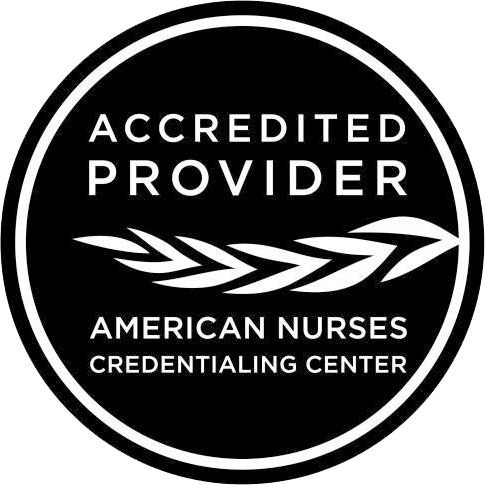
-
Register
- User - $10
The evaluation of patients who present with the chief complaint of “ knee pain” will be the topic of this discussion. Sensitive and specific history including physical exam techniques will be reviewed. Following the best diagnostic strategies and management planning, including telemedicine best practices.
Credits: 1.00 contact hours; 0.25 are pharmacology
Expiration Date: June 30th, 2024
$10.00
LEARNING OBJECTIVES
As a result of this activity, the learner will be able to:
- Describe commonly used orthopedic exam techniques such as a flexion pinch and anterior drawer test for the knee
- Perform the more commonly incorporated examination techniques used in a musculoskeletal examination for the knee joint
- Incorporate the use of orthopedic examinations into their practice

Karen M. Myrick, DNP, APRN, FNP, ANP, ONP, FAAN
Associate Professor, University of Saint Joseph, Interdisciplinary Health and Science
Nurse Practitioner, Orthopedics Associates of Hartford
Karen M. Myrick, DNP, APRN, FNP, ONP, FAAN, is an Associate Professor in the School of Interdisciplinary Health and Science, Department of Nursing, University of Saint Joseph, West Hartford, Connecticut, and the track coordinator for the Post-Master's Orthopedics and Sports Medicine Certificate program for Nurse Practitioners and Physician. Assistants. She is also a Clinical Associate Professor of Medical Sciences, School of Medicine, Quinnipiac University, Hamden, Connecticut. Dr. Myrick also maintains a clinical practice as a nurse practitioner at an orthopedic urgent care. Dr. Myrick is an avid researcher with a focus is on athletes and sports medicine. The recipient of multiple grants, she works to improve the clinical health assessment of her patient population. She is the recipient of the National Association of Orthopedic Nurses (NAON) research grant award this year, 2021. Dr. Myrick's passion for patient care, education and research is evidenced by her development and testing of a newly designed physical examination technique for determining hip labral tears, “The Hip Internal Rotation with Distraction (THIRD) Test.” Dr. Myrick is the author of Orthopedic and Sports Medicine Case Studies for Advanced Practice Nurses, co-editor of Advanced Health Assessment and Differential Diagnosis: Essentials for Clinical Practice, editor of Orthopedic Nurses Certification review, and a senior editor for the interprofessional Journal of Clinical Case Reports. Karen is a triathlete, martial artist, and runner. Her personal interests are well-aligned with her expertise in the area and her research.
CE INFORMATION
Obtain Your Credits
To earn credits for this activity, you must complete all course components in the following order: 1) complete a three-question pre-test; 2) watch the course presentation video; 3) complete the course evaluation; 4) pass the post-test with a score of 2/3 (66.7%) or higher. You may retake the post-test until a passing score is achieved, at which point you will be able to view/print a copy of your certificate of completion. This online certificate will also be saved within your profile dashboard transcript for future access.
Designation Statement
NPACE designates this educational activity for a maximum of 1.00 contact hours, of which 0.25 is pharmacology credit. Participants should claim only credit commensurate with the extent of their participation in the activity.
Accreditation Statement
Nurse Practitioner Associates for Continuing Education (NPACE) is accredited as a provider of nursing continuing professional development by the American Nurses Credentialing Center’s Commission on Accreditation (ANCC).
In addition to ANCC, NPACE is approved as a provider of continuing education in nursing by: the California Board of Registered Nursing, Provider Number CEP8720 and Florida CE Broker #50-1476.
DISCLOSURES
Faculty
Contributing faculty, Karen Myrick, DNP, APRN, FNP-BC, ANP-BC, have disclosed no relevant financial relationships.
Planners
All planners and contributors involved in this educational activity have disclosed no relevant financial relationships.
Disclaimer
The material presented in this continuing education program is being made available for educational purposes only and is not intended to represent the best or only methods, medications and/or guidelines appropriate for the medical situation discussed. Rather the material is intended to present an approach, view, statement, or opinion of the presenter(s), which may be helpful, or of interest to other practitioners and should not be used by clinicians without the evaluation of their patient’s conditions and possible contraindications on dangers in use, review of any applicable manufacturer’s product information, and comparison with recommendations of other authorities. NPACE disclaims any liability, loss, injury, or damage incurred as a consequence, directly or indirectly, of the use and application of any information given in a presentation.
Disclosure of Unlabeled Use
This educational activity may mention the uses of products that are not approved by the FDA for the indication(s) being discussed. The presenter(s) are instructed to notify participants when they are discussing unapproved uses or investigational agents. The opinions related to unapproved uses of products are solely those of the presenter(s) and are not endorsed or recommended by NPACE. Please refer to the official prescribing information for each product for discussion of approved indications, contraindications, and warnings.
Commercial Support
There is no commercial support for this activity.

